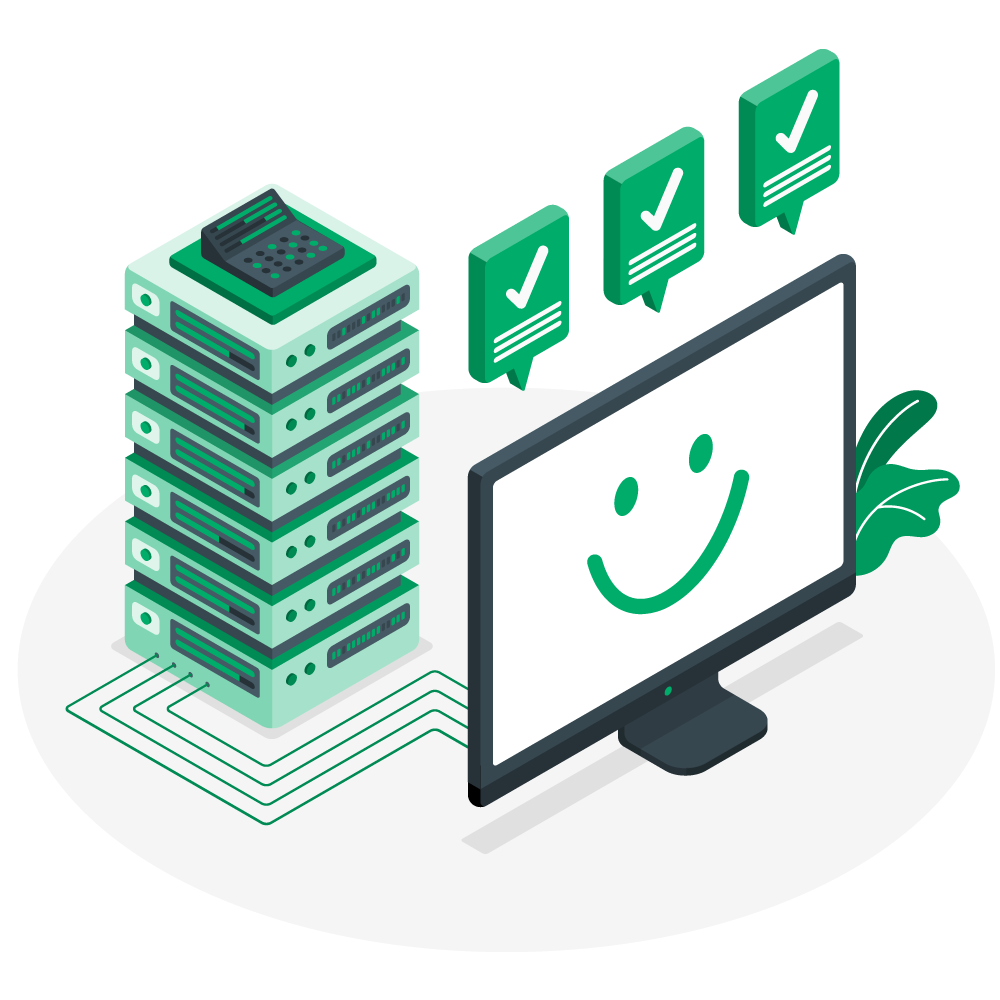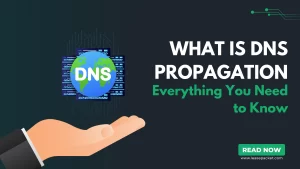Located in southern San Francisco, Silicon Valley is a globally renowned epicenter of technology & innovation. Its significance in the server space derives from various tech companies, data centers, and networking infrastructure. A dedicated server in Silicon Valley requires cutting-edge technologies for businesses seeking reliable & high-performance server solutions.
Overview of Dedicated Servers
Dedicated servers are physical servers leased by a single client for exclusive use. Unlike shared server, where multiple users share resources on a single server, dedicated servers offer greater control, customization, and performance. They are commonly used by businesses with high-traffic websites, resource-intensive applications, or strict security requirements. Dedicated servers provide the reliability & scalability necessary to support mission-critical operations and ensure optimal performance for users.
Dedicated Servers Functionality
A dedicated server is a physical server leased by an individual or organization for exclusive use. It gives complete control over hardware resources, operating systems, and software configurations. Dedicated servers are typically housed in data centers with redundant power supplies, cooling systems, and security measures to ensure uninterrupted operation. That’s why Silicon Valley dedicated servers are often placed in cool places.
Advantages & Disadvantages
The advantages of dedicated servers include enhanced performance, improved security, and customization options. Businesses can also optimize server performance to meet specific requirements and handle high traffic volumes efficiently. However, dedicated servers can be more expensive than shared server options and may require technical expertise to manage effectively.
Factors to Consider with Dedicated Servers
Before selecting a dedicated server, businesses should consider performance requirements, budget constraints, scalability needs, and technical support availability. Assessing these factors will help choose a dedicated server solution that aligns with their goals and can accommodate future growth.
1. Silicon Valley as a server Hub
Historical Background & Evolution
Silicon Valley’s emergence as a server hub can be traced back to the early days of the semiconductor industry in the 1950s. The region’s proximity to top universities, venture capital firms, and tech giants like Intel, Apple, and Google has fueled its rapid growth. Over the decades, Silicon Valley has evolved into a global epicenter for technology, attracting talent, investment, and cutting-edge research in areas such as cloud computing, artificial intelligence, and cybersecurity. That attracted dedicated server providers in Silicon Valley.
Infrastructure & Connectivity
Silicon Valley boasts a robust infrastructure of data centers, fiber optic networks, and internet exchange points that facilitate smooth connectivity and data transmission. Major data center providers like Equinix, Digital Realty, and CoreSite operate state-of-the-art facilities in the region to offer high-speed connectivity, redundant power supplies, and advanced security features to support the needs of businesses worldwide.
Key Players & server Providers
Silicon Valley is a diverse ecosystem of server providers like Leasepacket, ranging from industry giants to niche players specializing in specific services or industries. Companies like Amazon Web Services (AWS), Microsoft Azure, and Google Cloud Platform dominate the market with their complete suite of cloud services – while smaller providers offer specialized solutions tailored to the needs of startups, enterprises, and research institutions.
2. Advantages of server in Silicon Valley
Proximity to Tech Innovations & Talent
Dedicated server in Silicon Valley provides businesses unparalleled access to the latest technological innovations and a vast pool of skilled professionals. The region’s dynamic ecosystem fosters collaboration, knowledge sharing, and networking opportunities that can accelerate product development, drive innovation, and fuel business growth.
Robust Network Infrastructure
Silicon Valley’s extensive network infrastructure ensures reliable connectivity and low latency for businesses server their servers. With multiple internet exchange points, high-speed fiber optic networks, and redundant connectivity options – Silicon Valley offers an ideal environment for businesses that require fast, reliable, and scalable server solutions.
Scalability & Flexibility
server in Silicon Valley enables businesses to scale their infrastructure quickly and easily to accommodate changing demand. With a wide range of dedicated server providers, data center facilities, and cloud services available in the region – businesses can choose the solution that best fits their needs and budget, whether they require dedicated servers, virtual machines, or managed server services.
3. Selecting the Right Dedicated Server Provider in Silicon Valley
Assessing Your Server Needs
Before choosing a dedicated server provider in Silicon Valley, businesses should assess their server needs, including performance requirements, storage capacity, bandwidth, and security features. Understanding these requirements will help select a provider that could meet their needs and deliver the required services & support.
Researching Providers in Silicon Valley
While researching dedicated server providers in Silicon Valley, businesses should consider reputation, reliability, uptime guarantees, and customer reviews. It’s essential to have a provider with a proven track record of delivering high-quality server services to ensure a positive server experience.
Evaluating Performance Metrics & SLAs
When evaluating Silicon Valley dedicated server providers, businesses should review performance metrics such as uptime, network speed, and other latency – as well as service level agreements (SLAs) governing service availability, maintenance windows, and support response times. Choosing a provider offering robust performance guarantees and transparent SLAs will help ensure reliable and consistent server performance.
4. Setting Up a Dedicated Server in Silicon Valley
Preparing Hardware & Software Requirements
Before setting up a dedicated server in Silicon Valley, businesses should ensure they can fulfill the hardware and software requirements. This includes selecting the appropriate server hardware, operating system, and software applications to support their operations and meet their performance goals.
Configuring Network & Security Settings
Once the hardware and software requirements are in place, businesses configure network and security settings to ensure safety. This includes firewalls, access controls, and encryption protocols set up to protect sensitive data and prevent unauthorized access.
Deploying & Managing Your Server
After configuring network & security settings, businesses can deploy their dedicated server in Silicon Valley’s data center facilities. This involves installing and configuring server software, transferring data & applications, and performing routine maintenance & monitoring to ensure optimal performance.
5. Optimization & Performance Tuning
Monitoring Tools & Techniques
Optimize the performance of dedicated servers using monitoring tools to track performance metrics such as CPU utilization, memory usage, disk I/O, and network traffic. Real-time monitoring helps identify bottlenecks and fine-tune the server configurations.
Implementing Load Balancing & Redundancy
Implementing load balancing techniques can help distribute workload evenly across multiple servers and ensure high availability & fault tolerance. By deploying load balancers, clustering solutions, and failover mechanisms – businesses can minimize downtime and maximize uptime for their hosted applications.
Fine-tuning for Efficiency & Reliability
Fine-tuning server configurations, optimizing software settings, and implementing performance optimizations can help improve efficiency. This includes optimizing database queries, caching frequently accessed data, and tuning operating system parameters to maximize server performance and minimize response times for end-users.
6. Security Measures for Dedicated Servers in Silicon Valley
Understanding Common Threats & Vulnerabilities
Dedicated servers in Silicon Valley are vulnerable to various security threats, including malware, phishing attacks, DDoS attacks, and unauthorized access attempts. Understanding these common threats & vulnerabilities is essential for implementing security measures to protect sensitive data and ensure the integrity and availability of hosted applications and services.
Implementing Firewall & Encryption Protocols
Implementing firewall protocols can help safeguard dedicated servers in Silicon Valley against unauthorized access and data breaches. Firewalls can filter incoming and outgoing network traffic to block malicious activity – while encryption protocols such as SSL/TLS can secure data in transit and at rest to prevent eavesdropping and tampering.
Regular Audits & Updates
Regular security audits are essential for maintaining the security of dedicated servers in Silicon Valley and protecting against emerging vulnerabilities. This includes installing security patches & updates promptly, conducting vulnerability scans & penetration tests regularly, and enforcing strong access controls & password policies to prevent unauthorized access.
7. Data Backup & Disaster Recovery Strategies
Importance of Regular Backups
Regular backups are critical for protecting against data loss due to hardware failures, software errors, or malicious attacks. Businesses should implement automated backup solutions to regularly back up data and store backup copies securely offsite to ensure they can be restored when required.
Establishing Recovery Protocols
Establishing recovery protocols & disaster recovery plans is essential for minimizing downtime and data loss in any disaster. Businesses should define recovery objectives, prioritize critical systems & data for restoration, and establish procedures for activating & testing disaster recovery plans to ensure they are effective.
Testing & Updating Disaster Recovery Plans
Regular testing & updating of disaster recovery plans are essential for ensuring they remain up-to-date. Businesses should conduct regular drills and simulations to test the recovery protocols, identify gaps, and make necessary updates and improvements to enhance their resilience for emergencies.
8. Compliance & Regulations in Silicon Valley
Overview of Data Privacy Laws
server businesses in Silicon Valley must comply with various data privacy laws & regulations governing the collection, storage, and processing of sensitive data. These include regulations such as the California Consumer Privacy Act (CCPA), the General Data Protection Regulation (GDPR), and industry-specific standards such as HIPAA for healthcare data & PCI DSS for payment card data.
Ensuring Compliance with Industry Standards
Ensuring compliance with industry regulations requires server businesses in Silicon Valley to implement robust security controls, data protection measures, and privacy practices. Also, establishing policies & procedures for handling data breaches and complying with legal & regulatory requirements.
Mitigating Legal Risks
Mitigating legal risks associated with servers in Silicon Valley requires server businesses to stay informed about changes to data privacy laws, monitor compliance requirements, and implement proactive measures to address potential risks. This includes conducting regular risk assessments, obtaining legal advice when necessary, and maintaining proper documentation to demonstrate compliance with applicable law.
Future Trends in Dedicated Servers in Silicon Valley
Emerging Technologies & Innovations
The future of dedicated servers in Silicon Valley is shaped by emerging technologies such as edge computing, AI, and 5G networks. These technologies demand faster, more efficient, and scalable server solutions for the growing volume of data generated by IoT devices, smart cities, and digital transformation initiatives.
Predictions for Silicon Valley’s Server Space
The server landscape in Silicon Valley is expected to continue evolving rapidly – with advancements in cloud computing, containerization, and serverless architectures reshaping how businesses manage their infrastructure. As businesses increasingly adopt hybrid & multi-cloud strategies – server providers in Silicon Valley will need to innovate their services to remain competitive in a rapidly changing market.
Adapting to Evolving Business Needs
server providers in Silicon Valley must adapt to evolving business needs by offering flexible & scalable server solutions that can support dynamic environments. This includes investing in infrastructure upgrades, expanding service offerings, and enhancing automation & self-service capabilities to empower businesses to innovate.
Conclusion
As the epicenter of innovation, Silicon Valley continues to be a premier destination for businesses seeking reliable & high-performance server solutions. By partnering with experienced server providers and leveraging the region’s technological expertise – companies can position themselves for success in an increasingly digital world. The future of dedicated servers in Silicon Valley is bright – with continued advancements in technology, infrastructure, and service offerings driving growth in the server industry. As businesses embrace digital transformation and seek to capitalize on emerging opportunities, dedicated servers in Silicon Valley will remain a cornerstone of their server strategies, providing the performance, security, and flexibility needed to thrive in a competitive marketplace.
FAQs
Q1. What is a dedicated server?
A dedicated server is a physical server leased by an individual or organization for exclusive use. It gives you control over hardware resources, operating systems, and software configurations – offering enhanced performance, security, and customization options compared to shared server.
Q2. Why choose Silicon Valley for server?
Silicon Valley is renowned for its tech ecosystem, offering access to cutting-edge technologies, a skilled workforce, and a robust network infrastructure. server in Silicon Valley provides proximity to tech innovations, scalable solutions, and reliable connectivity – making it an ideal choice for businesses seeking high-performance server solutions.
Q3. What factors should I consider before choosing a dedicated server?
Before selecting a dedicated server, consider factors such as performance requirements, budget constraints, scalability needs, and technical support availability. Assessing these factors will help you choose a solution that aligns with your goals and can accommodate future growth.
Q4. How do I set up a dedicated server in Silicon Valley?
To set up a dedicated server in Silicon Valley, prepare hardware & software requirements, configure network & security settings, and deploy & manage your server in a data center facility. Ensure proper installation, configuration, and maintenance to optimize performance & reliability.
Q5. What security measures should I implement for my dedicated server?
Implement firewall & encryption protocols to protect against unauthorized access and data breaches. Regularly audit & update security measures, conduct vulnerability scans & penetration tests, and enforce strong access controls & password policies to mitigate security risks and ensure compliance with regulations.
Q6. What are the future trends in dedicated server?
Emerging technologies such as edge computing, artificial intelligence, and 5G networks are shaping the future of dedicated server. Expect advancements in cloud computing, containerization, and serverless architectures to drive innovation and reshape how businesses deploy, manage, and scale their server infrastructure in Silicon Valley and beyond.
























